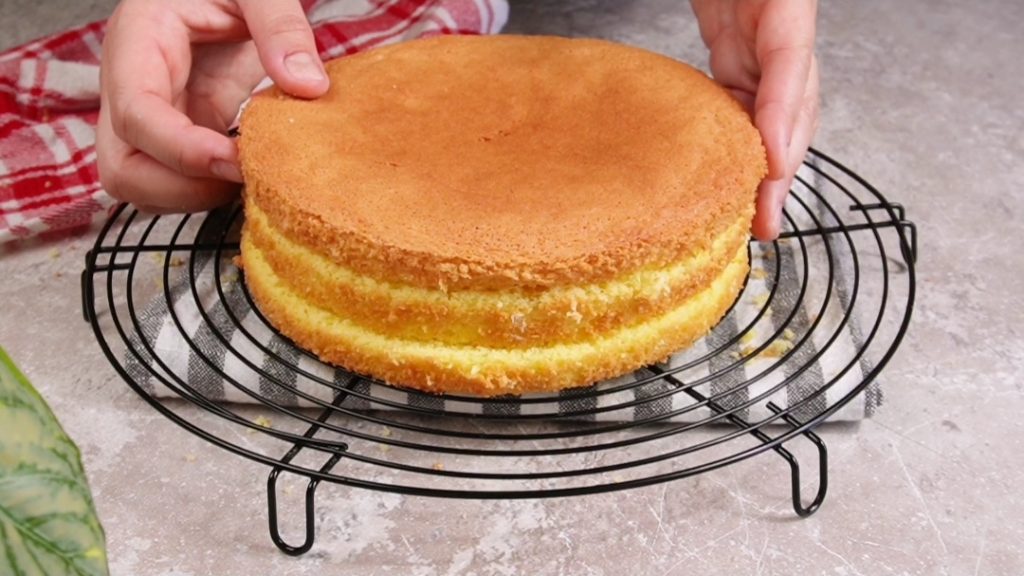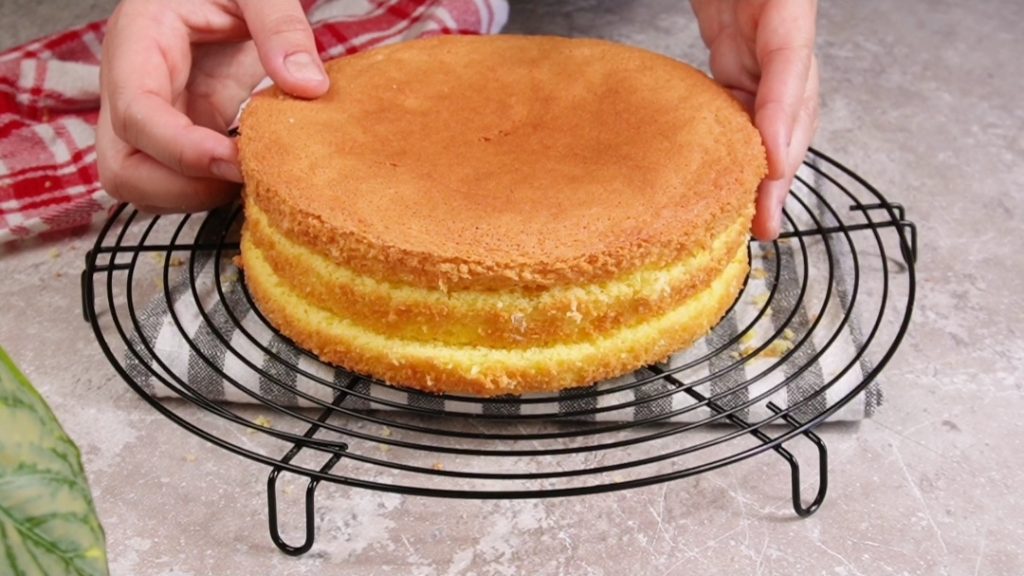The following is the detailed recipe for the CLASSIC SPONGE CAKE, tall and very fluffy, for which no yeast is absolutely used; this is because the original recipe does not include it and because it is not necessary for the successful outcome of the sponge cake. In fact, on the contrary, it is not guaranteed that yeast will ensure the success of the recipe.
To achieve a perfect sponge cake with only eggs, weak flour, and sugar, very few and simple steps are needed, which, however, must be followed to the letter.
Another interesting thing to know about sponge cake is that there are three types, classified based on the ‘whip‘ (which technically in pastry indicates a mixture that has incorporated air through a mechanical movement – for example, that of electric whisks – and therefore has expanded without the help of chemical agents):
– LIGHT WHIP in which each medium egg corresponds to 20-25 g of flour and 20-25 g of sugar
– MEDIUM WHIP in which each medium egg corresponds to 30-35 g of flour and 30-35 g of sugar
– HEAVY WHIP in which each egg corresponds to 50-55 g of flour and 50-55 g of sugar.
Usually, the classification between the various types is made based on the weight of the eggs and not the quantity, as I have indicated to you; I wanted, in fact, to simplify the execution of the recipe as much as possible. Basically, you should consider that for each egg used, 30 g of flour and 30 g of sugar correspond.
With the necessary premises made, what you will find in detail (with also the COMPLETE VIDEO) is the execution of a medium whip sponge cake, ideal for decorated cakes for birthdays or small ceremonies, as it remains soft and delicate. It lends itself perfectly to being filled with custard or chantilly cream and covered with whipped cream or chocolate ganache.
The recipe is calibrated for a round cake pan with a 20 cm diameter, for which 4 eggs are usually used; I also leave you below the necessary quantities based on the size of the mold.
ROUND cake pan diameter:
18 cm – 3 eggs 90 g sugar 90 g flour
20 cm – 4 eggs 120 g sugar 120 g flour
22 cm – 5 eggs 150 g sugar 150 g flour
24 cm – 6 eggs 180 g sugar 180 g flour
26 cm – 7 eggs 210 g sugar 210 g flour
28 cm – 8 eggs 240 g sugar 240 g flour
30 cm – 9 eggs 270 g sugar 270 g flour
RECTANGULAR mold:
18×15 cm 3 eggs 90 g sugar 90 g flour
20×16 cm 4 eggs 120 g sugar 120 g flour
22×17 cm 5 eggs 150 g sugar 150 g flour
26×20 cm dose with 6 eggs or with 7 eggs
28×22 cm dose with 8 eggs or 9 eggs
If you are interested in the recipe for the light whip sponge cake, I leave it to you below:

- Difficulty: Easy
- Cost: Very economical
- Preparation time: 15 Minutes
- Portions: servings for a 20 cm springform pan
- Cooking methods: Oven
- Cuisine: Italian
- Seasonality: All seasons
Ingredients to make the classic SPONGE CAKE
- 4 eggs (medium, at room temperature)
- 120 g sugar
- 120 g all-purpose flour (weak, with 8-9 g of protein per 100 g)
- optional flavors (lemon zest or vanilla)
Tools to make the CLASSIC SPONGE CAKE
- Electric whisks
- Cake pan 20 cm springform
Steps to prepare the CLASSIC SPONGE CAKE
As I mentioned in the introduction, for the video you can find a little higher up, I used the quantities of eggs, sugar, and flour that fit a 20 cm cake pan. However, by following the steps below, you can make your sponge cake with the quantities modified according to your needs and thus your cake pan. The procedure, of course, does not change!
The only thing that will need to be slightly modified is the baking time and the minutes you will need to beat the eggs with the sugar; both will increase by a few minutes proportionally to the increase in the quantity of ingredients.
In a very large bowl, break the eggs, which must strictly be at room temperature. If, as is correct, you usually store them in the fridge, consider taking them out of the fridge for at least an hour before starting to make the recipe.
Add the sugar all at once and start the electric whisks, first at medium power and then at maximum power.
Continue to whip for AT LEAST 10-12 minutes, until you get a very light and foamy mixture that has quadrupled in volume and, as you can see in my video (HERE), it should ‘write’ when you lift the whisks and let it fall back onto the rest of the mixture; that is, it should not immediately reincorporate but only after a few seconds.
Once you have whipped the eggs with the sugar, it’s time to gradually incorporate, a little at a time, the sifted flour (and any optional flavors such as grated lemon or orange zest or vanilla).
You can choose to incorporate it with a hand whisk (recommended) or with a silicone spatula, a slightly more complicated method as it is more difficult to distribute the flour evenly within the mixture.
Make broad but gentle movements, from bottom to top, until the flour is completely blended.
All that remains is to line the base of a springform pan (I used a 20 cm diameter cake pan) with parchment paper and pour in the obtained mixture, leveling it as best as you can.
Bake in a preheated static oven at 175-180 degrees Celsius (350-355 degrees Fahrenheit) for about 35 minutes. The indicated minutes are always subject to variation based on your oven, and if you use larger cake pans than the 20 cm one I used, consider a longer baking time; always perform the toothpick test in the center to ensure it is well cooked inside.
And here is your classic SPONGE CAKE, tall, evenly golden, and very fluffy!
Let cool completely before removing it from the cake pan. Before opening the springform, help yourself with a knife to detach it well from the edges.
When it is completely cooled, you can proceed to possibly cut it into layers and soak it; consider that, being really very fluffy, you will need to use little soaking.

Useful tips
As with all cakes, a sponge cake that collapses a lot in the center will unfortunately be a sponge cake that has not cooked enough. That said, it is physiological that once taken out of the oven, your sponge cake will tend to slightly descend.
To minimize this minor inconvenience, I recommend that, once the baking is finished, you turn off the oven and keep the sponge cake inside, with the oven door slightly open. After 5-10 minutes, you can take it out of the oven and allow it to cool completely.
– If you want to make your sponge cake more crumbly, you can replace part of the flour with potato starch, but never exceed 50% of the total.
– If you want to try chocolate sponge cake, consider replacing 8 g of flour with 8 g of unsweetened cocoa powder for every 100 g of flour.

